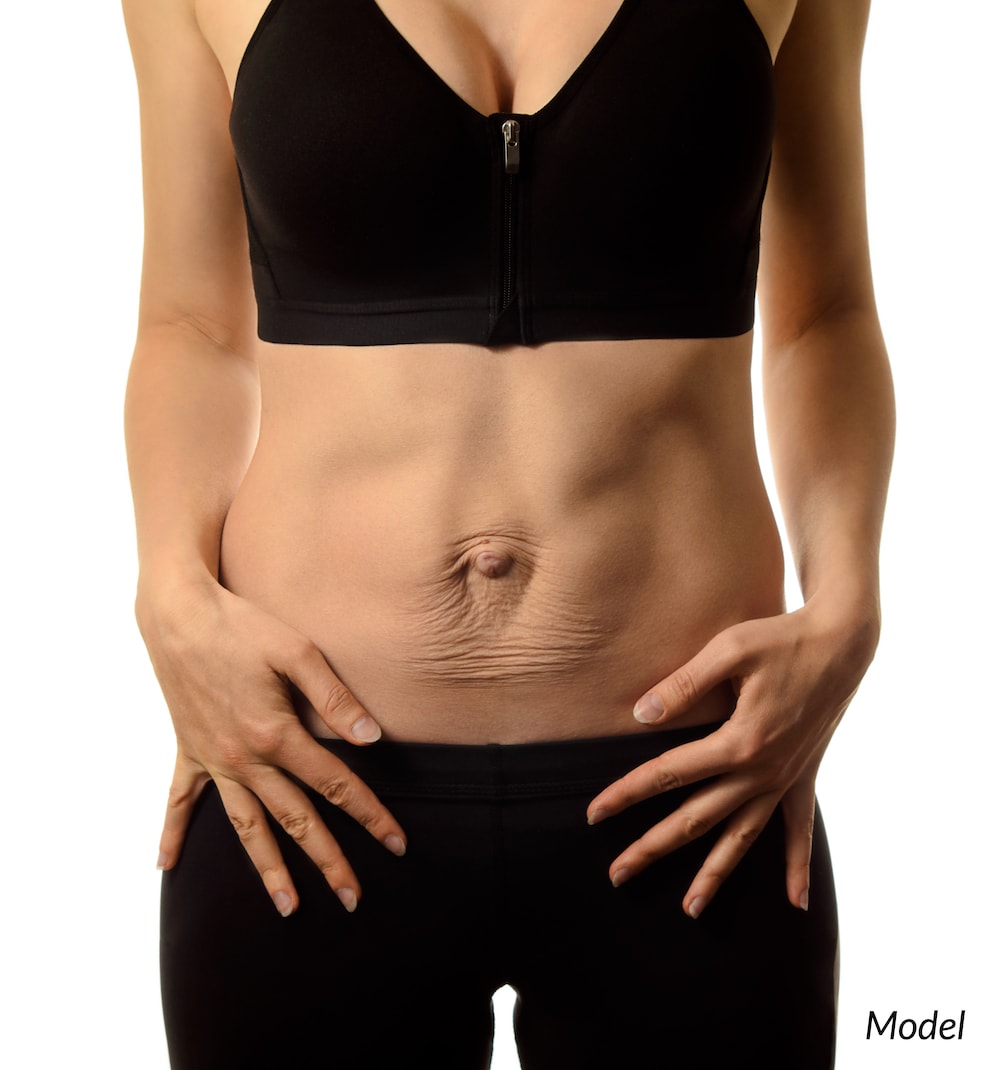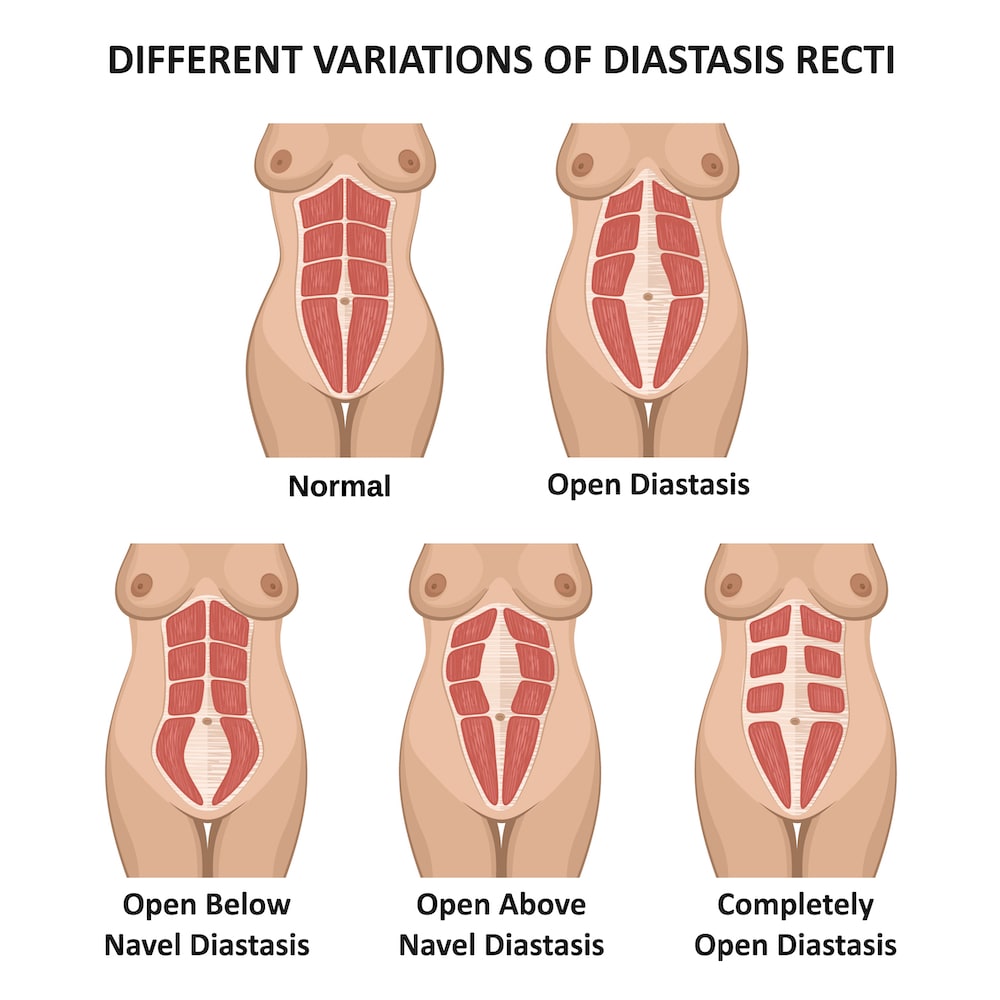Diastasis Recti: What Is It? Can It Be Avoided?
 3 Minute Read:
3 Minute Read:
Diastasis recti is a condition that affects nearly 60 percent of postpartum women; however, many women have never heard of it. Diastasis recti is often a result of pregnancy—or significant weight fluctuations—that causes the separation of the abdominal muscles.
This separation results in a protruding stomach—or a lower stomach pooch—and is resistant to diet and exercise.
Many women experience frustration over their inability to tone this pooch, and they are unaware that it is not fat they are trying to target.
What Are the Symptoms of Diastasis Recti?
Diastasis recti is most common in women following pregnancy, and it gives many women the appearance of being pregnant even after the birth of their child.
How Do I Know If I Have Diastasis Recti?
You can perform a “self-check” six or more weeks after the birth of your child. Be sure it is ok with your obstetrician if you have had a c-section.
To perform a self-check:
 1. Lie on your back and bend your knees so that your feet are flat on the floor. (This position is the same as a sit-up position).
1. Lie on your back and bend your knees so that your feet are flat on the floor. (This position is the same as a sit-up position).
2. While supporting your head with one hand, raise your shoulders so that you can see your abdomen.
3. Using your free hand, move your hand along your abdomen until you can find the division between the muscles.
4. See how many fingers fit between the two sides of the muscles. A separation of anything more than one finger-width may be a sign that you have diastasis recti.
You can also be checked for diastasis recti by your doctor.
What Causes Diastasis Recti?
The abdominis rectus muscles are separated into two sections, right and left, that are usually spaced less than one finger-width apart.
During pregnancy, your growing uterus pushes the abdominal muscles out, and this force of expansion as well as the hormonal changes cause the two sides to separate, thus leading to a pooched abdominal appearance.
Women may also experience diastasis recti during the delivery due to the force of the pushing.
Unfortunately, there is no assured way to avoid diastasis recti. It is commonly believed that women with firmer, stronger stomach muscles before pregnancy will have a lesser chance; however, even women with “six-pack abs” can experience complications with this condition.
How Does Tummy Tuck Surgery Correct Diastasis Recti?
Tummy tuck surgery enhances abdominal contour by removing excess skin and fat and tightening loose or separated abdominal muscles (diastasis recti), that mimics an internal corset.
During this procedure, your plastic surgeon will repair this condition by reforming and repositioning the abdominal muscles, kind of like an “internal girdle.”
Tummy tuck surgery is the only way to repair moderate to significant diastasis recti.
Can Liposuction Correct Diastasis Recti?
Even though diastasis recti looks like excess fat, liposuction will not correct the situation.
Liposuction removes excess fatty deposits from the abdomen; it does not tighten sagging skin or abdominal muscles.
Liposuction may be performed with a tummy tuck to enhance the belt line by reducing fat in the hip regions.
Are You Interested in Tummy Tuck Surgery in Las Vegas, NV?
To learn more about tummy tuck surgery or diastasis recti, contact Dr. George Alexander by calling (702) 242-6776 or by filling out our online contact form.



